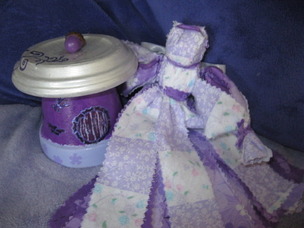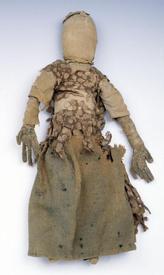

As A History of Dolls puts it, “Although not as sophisticated as dolls made from other materials, rag dolls were well-loved, often as a child’s first toy.” It is also “the most popular and well known of all American Folk Dolls,” according to Historical Folk Toys. Though most rag dolls have not survived due to disintegration, the oldest surviving rag doll in North America is Bangwell Putt.
Around the 1780s, toys were used and encouraged to prepare for gender-oriented socially acceptable roles, such as mother and wife for girls. Before this, in England, dolls such as Bartholomew’s babies were used as ways to display fashions and styles. It would have been the 1750’s version of a fashion or dress-pattern catalog. Before even this, as early as 1630, rag dolls were popular toys.
A little history is shared on the Wagon Train Dolls website. The wagon train dolls are what inspired my Raggle Taggle Fairy Dolls. During a vacation in Kern County, I came across the dolls in the local museum and felt inspired to make my own, with a fairy twist.
It is a universal toy and dolls like Bangwell Putt, and the box of my mothers dolls from her childhood, and my great great grandmother’s doll, Edna, are a connection to our history. They are personal. And because they are personal, they provide a magic to transport us to a time long forgotten. To think one day, my great great granddaughter can look at my Molly Doll from the Comfy Couch with the same awe I feel when I look at Edna. To think one day, it could be that custom Snuggle Huggle Fairy Doll that survives hundreds of years.
 RSS Feed
RSS Feed
